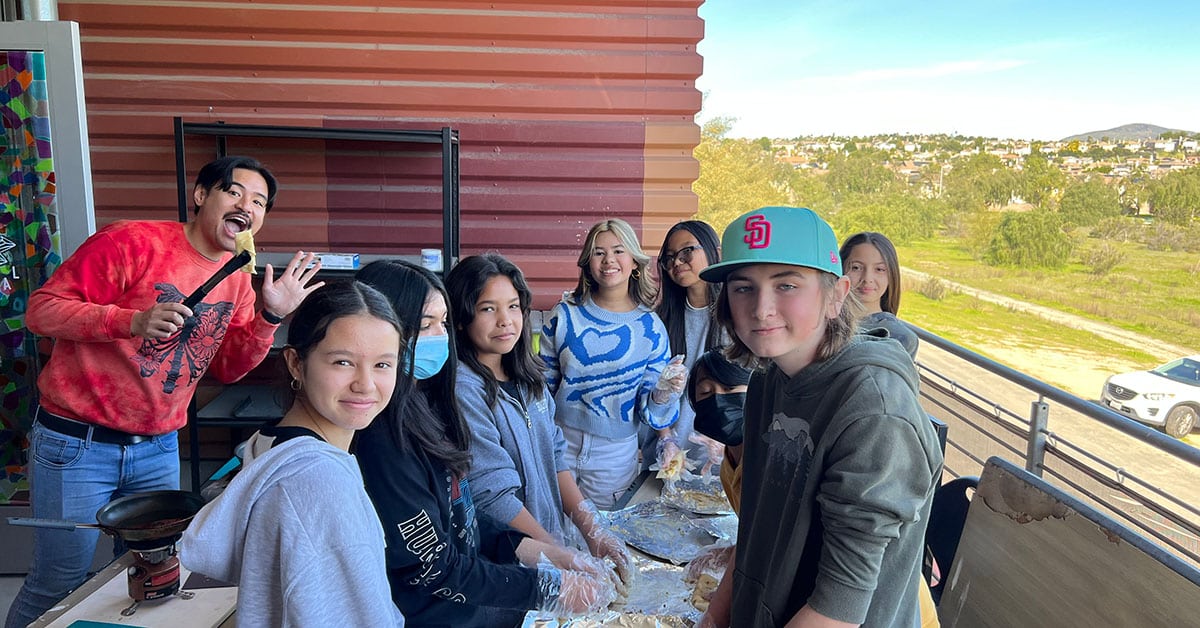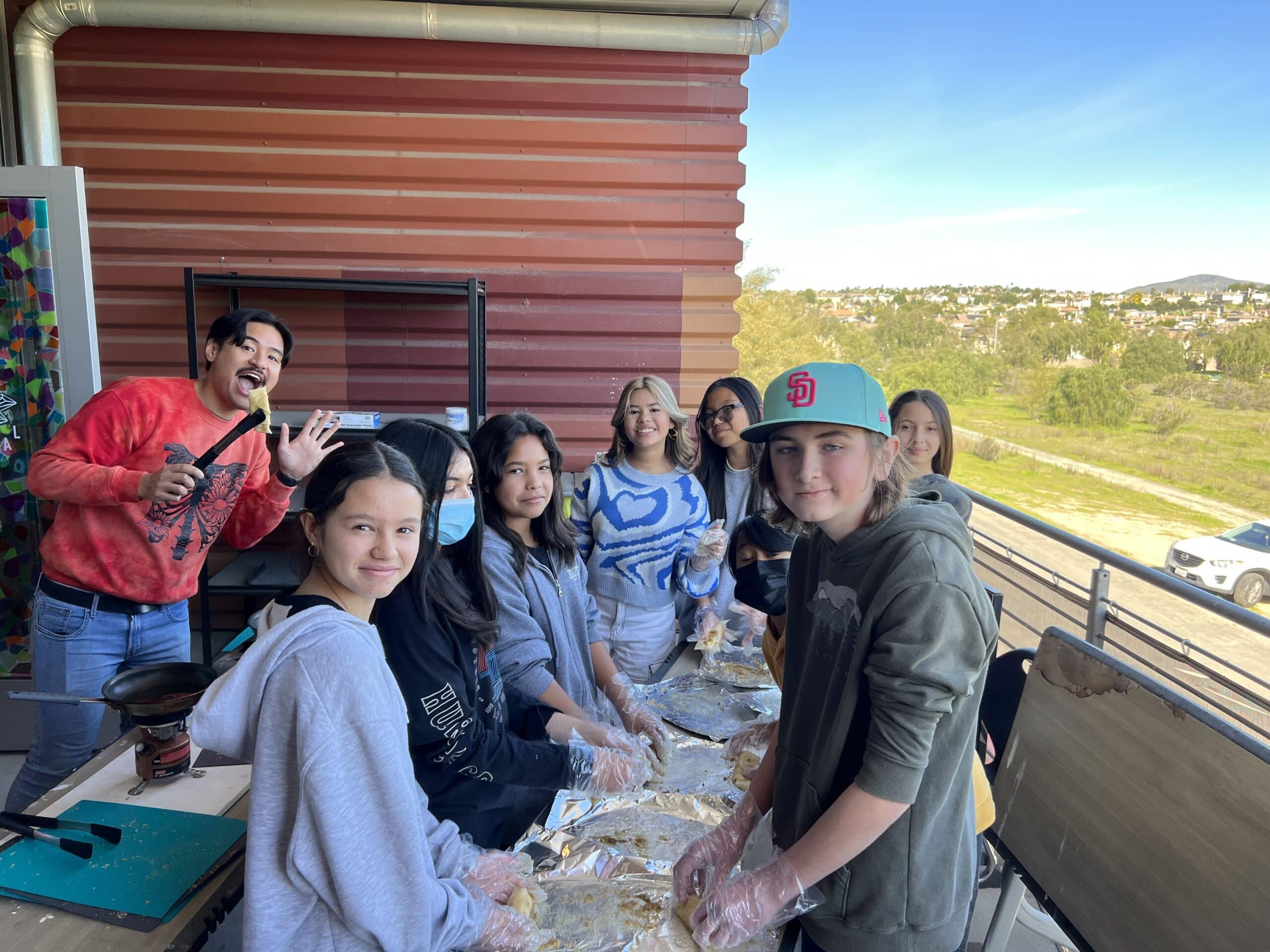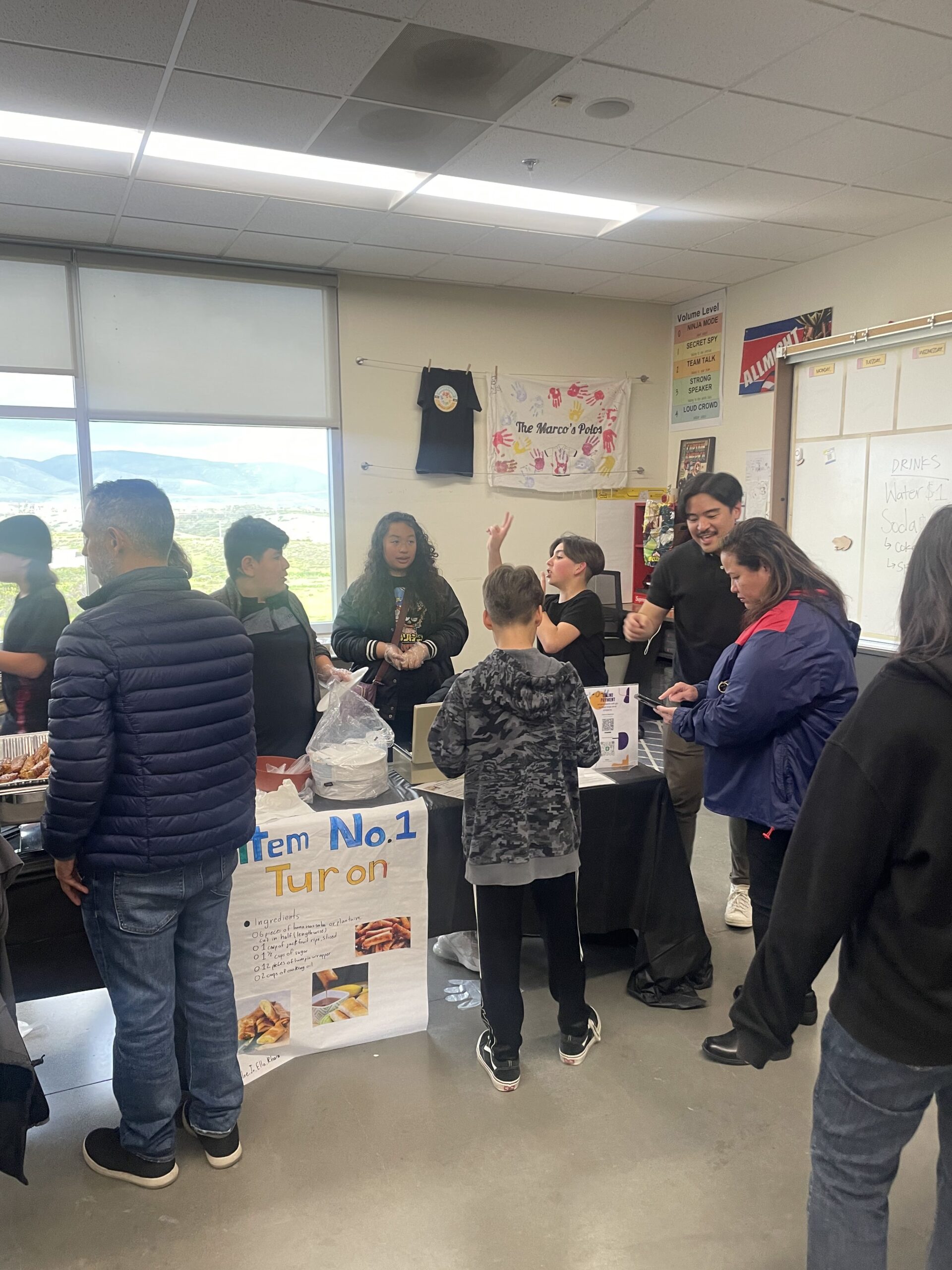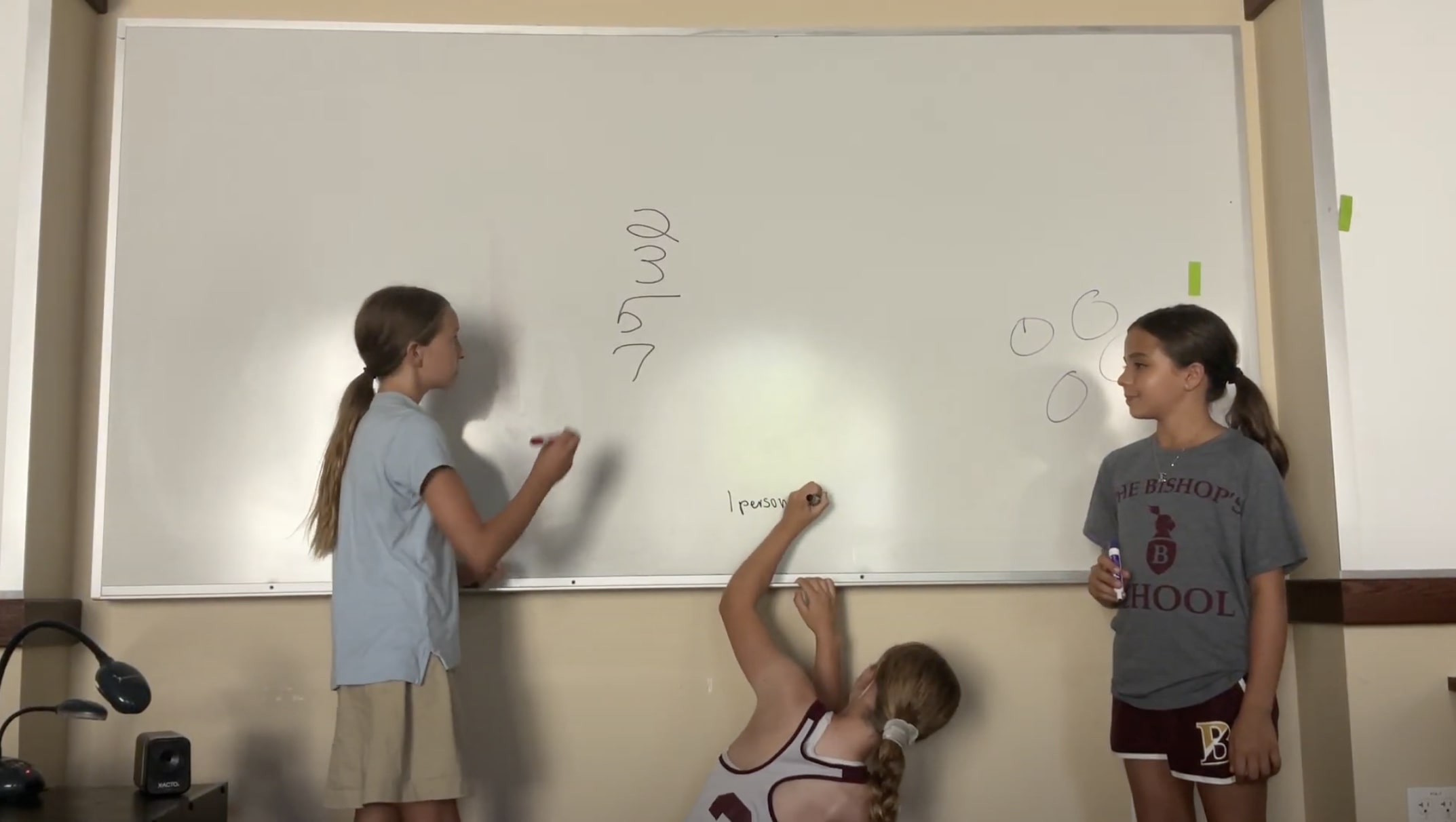
There are many simple and effective ways math teachers can gradually introduce project-based learning (PBL) into their classrooms, even if they teach at traditional schools. The lessons that follow come from the five years I spent at High Tech Middle Chula Vista, which is situated within the High Tech High (HTH) charter school system, including three as a math/science teacher. At High Tech Middle schools, math and science is typically integrated into a single classroom, and a dual-certified math/science teacher collaborates with an integrated English/history, or humanities, teacher, creating opportunities to design projects across disciplines.
My projects commonly started with a mathematical focus and then transitioned into science, engineering, or design. For example, in one interdisciplinary project I facilitated with my humanities teaching partner, students learned about scale factors and proportions as part of a project launch, and then applied these mathematical concepts to chemistry and food science projects. This culminated in an exhibition where students prepared cultural food (a Filipino dessert called turon) and served it to the school’s community partners. In another math/science project about solar cars, students studied gear ratios before shifting their focus to renewable energy, iterative design, and prototyping. To exhibit their work, we held a single elimination-style race tournament. Such subject-matter integration created an ideal platform for experimenting with PBL.


However, in 2023, I left HTMCV to teach at an independent school in San Diego. At my new school, math and science classes were not integrated as they were at HTH. Without interdisciplinary projects to drive student inquiry, I relied more heavily on direct instruction to keep up with the curriculum.
As I adjusted to this shift, I began to notice a pattern. In Building Thinking Classrooms, Peter Liljedahl writes that in traditional classrooms, “only about 20% of students” behave in ways we expect (2021). The rest, he writes, often resort to faking, stalling, slacking, or mimicking—and I saw all of these behaviors firsthand. For example, in our unit on percentages, I delivered a series of lessons on how to convert between fractions, decimals, and percents using an “I do—We do—You do” strategy. My students frequently remark that math doesn’t feel “real world,” and here was something that felt authentic, at least to me. Understanding percentages meant understanding taxes, discounts, and markups. After mimicking my steps, such as dividing the numerator by the denominator to convert a fraction to a decimal and then multiplying the decimal amount by 100 to convert to a percentage, students seemed to get it. But once I released them to practice independently, it was as if the lesson had never happened.
I remember feeling frustrated. My goal had always been to create a student-centered classroom where students felt capable of applying their understanding, persevering, and problem-solving. Yet there I was, lecturing more than I wanted (and more than they wanted), engaging the same few students, and wishing my classroom offered more opportunities for student autonomy.
Feeling despondent, I received an email from a former colleague about an opportunity to join an international professional learning community called Sandcastle. In this community, participants choose a project of interest, reflect on its growth areas, challenges, and strengths, and hold space for other educators to do the same. The group’s name felt fitting: Much like building a sandcastle, teaching is an iterative process. When a sandcastle doesn’t look or feel quite right, you can quickly and intuitively assess what changes should be made. The same can and should hold true for teaching.
This was it! My decision to join the Sandcastle community was fueled by dissatisfaction with how the year had gone and hope for what could be. The first Sandcastle cohort met at the end of the 2023–2024 school year. We shared our professional goals, which ranged from exploring new pedagogical strategies to refining instructional coaching and translanguaging practices. My goal was to fully embrace project-based learning, and Sandcastle provided both the accountability I needed and the freedom to begin.
Emboldened by this new community of colleagues, I entered the 2024–2025 school year thinking about how I might ramp up to a “proper project.” I recalled a series of workshops facilitated by Sarah Strong, the High Tech High Residency Grant Director and author of Dear Math: Why Kids Hate Math and What Teachers Can Do About It. Strong emphasizes giving students opportunities to share their learning with audiences beyond their teacher and classmates. I couldn’t do a full interdisciplinary project with my students, but I had a perfect opportunity to provide them with an authentic audience for their math work: back-to-school night.
Back-to-school night took place about six weeks into the first semester and offered students’ parents, guardians, and other guests the chance to experience an accelerated version of their child’s schedule. Each teacher got ten minutes to introduce themselves, their course, and make connections. In my first year, I presented a warm-up problem the students had already solved, discussed the syllabus and best practices, and had guests engage in a puzzle with the remaining time. While everyone was polite, I could sense their desire to move on.
About a week before this year’s back-to-school night, I asked myself: Why not have the students film and present their solutions instead? I knew from previous project-based learning experiences like schoolwide exhibitions and student-led conferences that when students design something for an authentic and valued audience, they engage more deeply, revise more thoughtfully, and take greater ownership over their work. Like in the aforementioned project, where students scaled recipes to serve at Festival del Sol, they were motivated to get it right because their audience was important to them. So, I redesigned our unit on number sense to culminate in a short video presentation that students would share with their families at back-to-school night. To no one’s surprise, the parents were far more engaged seeing their children share their thinking and explain their problem-solving processes. (Plus, I managed to reduce my required presentation time by about 20 percent, so it was a win for everybody!)

Another key aspect of PBL is critique and revision. Inspired by Dr. Geoff Krall’s Explainer Post: A Year’s Worth of Illuminating 5th-to-6th Grade Warm-Ups, I introduced error analysis warm-up problems to my class. In these activities, students critique examples of student work, which typically contain some inaccuracy, and provide constructive feedback for improvement. These activities allow for the gradual “turning up” of the math dial, to borrow a phrase from Dan Meyer (2010). For example, in our number sense unit, I had students look at a sample student’s evaluation of the expression and identify both an error and something mathematically correct. I required their feedback to reflect the norms we had established at the beginning of the year: Feedback should be kind, specific, and helpful, which is essential for a culture of excellence (Berger, 2003). Students seemed willing to share their thinking, and their classmates seemed willing to provide feedback in ways that supported mathematical precision and accuracy and honored each other’s ideas.
Thanks to Sandcastle and my fantastic colleagues, I feel hopeful about the upcoming semester. I’m excited to launch a scale factor project in which students create scaled-down physical models of historic landmarks using 3D printers or laser cutters. For our unit on rigid transformations, I look forward to students using reflections, rotations, and translations to create artwork. Additionally, in our final unit on statistics and probability, I’m eager for students to craft statistical questions for their peers to answer and then present their findings to each other. Like building a sandcastle, I anticipate each of these projects will involve mess, iteration, and unexpected beauty.
It’s possible to incorporate PBL principles into any math class without doing a large-scale project. Here are four ways you can incorporate PBL into your class right away. By making these adjustments, you can gradually introduce PBL without completely overhauling your curriculum. You can repeat these ideas from year to year, building on what is successful and redesigning areas that need improvement.
References
Berger, R. (2003). An ethic of excellence: Building a culture of craftsmanship with students. Heinemann.
Krall, G. (2024, July 17). Explainer post: A year’s worth of illuminating 5th-to-6th grade warm-ups. Emergent Math. https://emergentmath.com/2024/07/17/explainer-post-a-years-worth-of-illuminating-5th-to-6th-grade-warm-ups/
Liljedahl, P. (2021). Building thinking classrooms in mathematics: 14 teaching practices for enhancing learning. Corwin.
Meyer, D. (2010, March). Math class needs a makeover [Video]. TED Conferences. https://www.ted.com/talks/dan_meyer_math_class_needs_a_makeover.
Strong, S., & Butterfield, G. (2022). Dear Math: Why kids hate math and what teachers can do about it. Jossey-Bass.
Resources
The following resources have been integral in shaping my values as an aspiring PBL educator of math and science.
Danielson, C., Daley, M., Nho, C., & Fierst, M. (n.d.). Projects. Public Math. Retrieved December 16, 2024, from https://www.public-math.org/projects.
High Tech High Graduate School of Education. (n.d.). The PBL Design Kit. PBL Essentials. https://pblessentials.org/.
Huynh, T. (n.d.). About. PBLMath. Retrieved December 16, 2024, from https://www.pblmath.com/About.html
Sandcastle. Retrieved June 9, 2025, from https://www.magnusonedstudio.org/sandcastle.
Scherer, R. (2022, June 8). What is PBL? HTH Unboxed. https://hthunboxed.org/what-is-pbl/.
Tags: